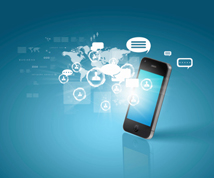While most of the Information Technology world was focused on Apple this week (okay, even I had one monitor tuned to their live stream), those of us who pay most of our attention to the enterprise Health IT community were reading the latest news on such mundane topics as health data interoperability, Meaningful Use, the HITECH ACT, and EMR/HIS adoption in hospitals and clinics. It was in that realm that I came across a recent article by John R. Graham of the conservative think-tank group known as the National Center for Policy Analysis.
While most of the Information Technology world was focused on Apple this week (okay, even I had one monitor tuned to their live stream), those of us who pay most of our attention to the enterprise Health IT community were reading the latest news on such mundane topics as health data interoperability, Meaningful Use, the HITECH ACT, and EMR/HIS adoption in hospitals and clinics. It was in that realm that I came across a recent article by John R. Graham of the conservative think-tank group known as the National Center for Policy Analysis. The article, “Interoperability” of Electronic Health Data is a Unicorn reviews the progress, or rather the lack of progress, in getting electronic medical record solutions to talk to one another. The article calls into question, as you might expect considering the source, on whether or not US taxpayers are getting their money’s worth for the $26 billion shelled out so far to help doctors and hospitals implement and “meaningfully use” electronic records.
There has been the considerable uptick in the use of EMRs since 2009 (now about 48 percent of all physicians and 44 percent of all hospitals according to a report in Health Policy Briefs ) due to the investment of federal dollars. I would have to agree, however, that the health industry is far from achieving any significant degree of meaningful interoperability between or among hospital and physician record keeping systems. Just try to get your medical record transferred from one institution to another if they happen to use different EMR solutions. But I wouldn’t go so far as to say the investment of federal dollars has been wasted. I mean, what’s the alternative to electronic medical records? Clearly in 2014 we wouldn’t advocate keeping something as important as our medical records on paper anymore, would we? What other industry does that? However, I do think the approach to what is commonly called Health Information Exchange is all wrong, and I’ve written on that topic before. Primarily I believe the current approach is all wrong because it doesn’t put patients at the center.
 Connecting everything to everything else in the ecosystem we call healthcare is extraordinarily complex. Furthermore, as the NCPA article points out, there really isn’t much of an incentive for hospitals and doctors to freely share data on their patients. However, most organizations and clinicians would agree to share data with the patient, who after all, is the person the data is about. So instead of connecting everything to everything, let’s connect everything (or even a subset of everything) to the patient.
Connecting everything to everything else in the ecosystem we call healthcare is extraordinarily complex. Furthermore, as the NCPA article points out, there really isn’t much of an incentive for hospitals and doctors to freely share data on their patients. However, most organizations and clinicians would agree to share data with the patient, who after all, is the person the data is about. So instead of connecting everything to everything, let’s connect everything (or even a subset of everything) to the patient.
I like HIE models that put patients at the center. Even if we start quite simply with a storage site for patient demographic information, payer information, current allergies, medical problem list and current medications, we would be far ahead of where we are today. A secure, cloud-based solution, under the patient’s direct control is far more optimal to my way of thinking than the aspirational and likely not achievable idea of creating pipelines of bi-directional, free-flowing health data between every hospital, clinic, doctor’s office, lab, imaging center, and more with the patient nowhere in the mix. If each of us had a secure place to store and access our own information, and the ability to share it with whoever needs to see it, we would have an HIE without boundaries. My information would be available from just about anywhere I might be.
With today’s announcements from Apple about the company’s new eye on health, and equally compelling solutions like Microsoft’s own HealthVault, as well as other such models for HIE and health-information sharing that will likely be forthcoming, I’ve got to believe that the federal government’s investment in electronic medical records will pay off in the long run. And since the stated goal or purpose of the so-called HITECH Act is to lower healthcare costs, improve access to care and the outcomes of care, it seems pretty clear that we can’t do any of that unless health data is electronic, accessible, and measurable (think analytics). With EMRs we are laying the foundation that is needed for everything else that follows. But I have to agree that the current state of interoperability is a bit like chasing unicorns. I think it is time to herd them in a new direction.






